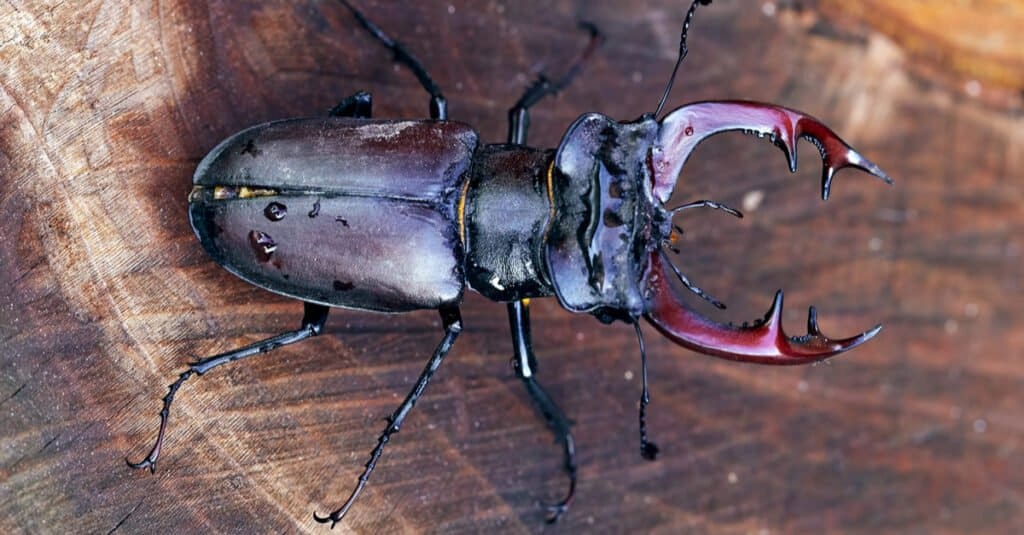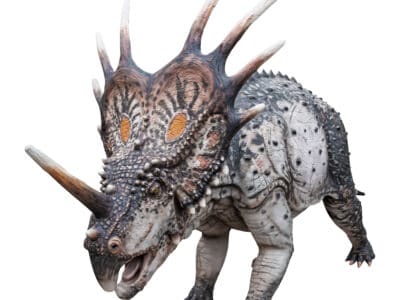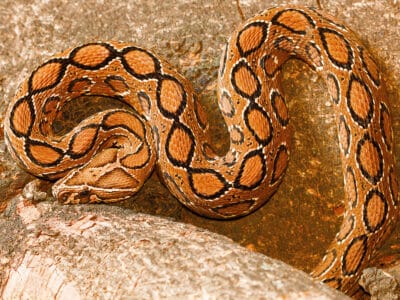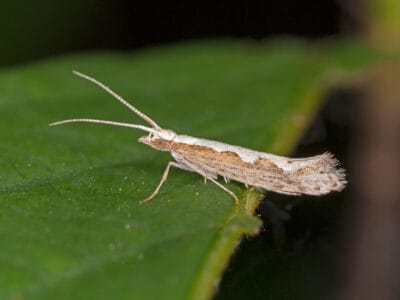Stag Beetle
.jumbotron {
background-image: url(“https://a-z-animals.com/media/2021/08/Stag-Beetle-Header-400×300.jpg”);
}
}
@media only screen and (min-width: 641px) and (max-width: 920px) {
.jumbotron {
background-image: url(“https://a-z-animals.com/media/2021/08/Stag-Beetle-Header-470×370.jpg”);
}
}
@media only screen and (min-width: 921px) {
.jumbotron {
background-image: url(“https://a-z-animals.com/media/2021/08/Stag-Beetle-Header.jpg”);
}
}
Stag Beetle
The stag beetle consumes rotting and decaying wood when it is in the larva stage.
Stag Beetle Scientific Classification
Read our Complete Guide to Classification of Animals.
Stag Beetle Conservation Status
Stag Beetle Facts
- Prey
- Rotting wood, fruits, and sap
- Name Of Young
- Larvae
- Group Behavior
-
- Solitary
- Fun Fact
- The stag beetle consumes rotting and decaying wood when it is in the larva stage.
- Biggest Threat
- Habitat loss
- Most Distinctive Feature
- The massive mandibles of the male
- Gestation Period
- A few days
- Litter Size
- 30 eggs
- Habitat
- Loose soil of deserts, forests, grasslands, and more
- Predators
- Mammals, bird, reptiles, amphibians, and insects
- Diet
- Herbivore
- Average Litter Size
- 100
- Type
- Insect
- Common Name
- Stag Beetle
- Number Of Species
- 1200
- Location
- Europe, North America
This post may contain affiliate links to our partners like Chewy, Amazon, and others. Purchasing through these helps us further the A-Z Animals mission to educate about the world’s species..

Spiders that fly! Fish that walk! And 1000+ more incredible animals. Discover them all for FREE
.photo-gallery {
–margin: 0px auto 0px;
–padding: 0px 0px 0px 0px;
}
.gallery-link {
background-image: url(“https://a-z-animals.com/media/2021/08/Stag-Beetle-1024×535.jpg”);
background-repeat: no-repeat;
background-size: cover;
background-position: center;
height: 500px;
justify-content: center;
text-align: center;
align-items: center;
display: flex;
border: 2px solid #000;
}
.gallery-link img {
height: 50%;
}
@media only screen and (max-width: 768px) {
.gallery-link {
height: 300px !important;
}
}
View all of the Stag Beetle images!
The oldest known fossil of the stag beetle dates back to the Middle Jurassic Period, approximately 150 to 160 million years ago.
The stag beetle is a family of large, hard-shelled, flying insects whose distinguishing trait is the ability to consume rotting wood as a larva. The name of this insect is derived from the giant mandibles on the male, which resemble the stags of a deer in the way they curve and branch. Their numbers appear to be declining in some parts of their range due to the loss of habitats and food sources.
3 Incredible Stag Beetle Facts!
- The giant mandibles for which this species is known have nothing to do with feeding. Instead, they allow the males to wrestle each other for access to females. The larger and stronger male usually emerges as the victor from the contest.
- After copulating with her partner, the female will often return to the place of her birth and lay around 30 eggs near rotting wood in the soil. The larvae emerge shortly later and spend a few years in grub form, feeding on the rotting wood. It undergoes a few different larval stages before becoming an adult. The total lifespan between larva and adult can sometimes reach up to seven years.
- The oldest known fossil of this insect dates back to the Middle Jurassic Period, approximately 150 to 160 million years ago. The form they were found in is known as a compression fossil, literally imprinted into sedimentary rock. Better-preserved fossils, dating back around 20 to 30 million years from the modern day Dominican Republic, were later found encased in amber.
Species, Types, and Scientific Name
The scientific name for the stag beetle family is Lucanidae. This name comes from the ancient Italian region of Lucania, at the southern end of the peninsula, where these beetles were used to make amulets. There are some 1,200 documented stag beetle species around the world. The best-known species is perhaps the European stag beetle, found all across the continent. Other well-known species include the multi-colored rainbow stag beetle of Australia and the cottonwood stag beetle of Arizona and the southwestern United States.
Appearance: How to Identify Stag Beetles
An adult is characterized by a wide segmented body and two pairs of wings. It is usually colored black or brown, but a select few species exhibit all manner of bright colors such as metallic green and iridescent red. The rainbow stag beetle has an entire range of bright rainbow colors. Adults normally grow 1 or 2 inches in length, but the largest species in the world, the giraffe stag beetle of southern Asia, measures about 5 inches long, much of which is just the massive mandibles. Males are obviously larger than females, again because of the mandibles. The larvae, by contrast, have a more grub-like appearance with an orange head. Measuring around 3 inches long, they’re generally larger than the adults, even without the giant mandibles.
While stag beetles have large mandibles, they generally do not bite humans. If they do do feel threatened and bite however, male stag beetle mandibles aren’t harmful while female bites can be quite painful.

Istomina Olena/Shutterstock.com
Habitat: Where to Find Stag Beetles
This species is found all over the world, usually in places with loose soil and high average temperatures. While they tend to be found in wooded lands, they also occupy all kinds of unexpected places. The cottonwood stag beetle of Arizona is even known to consume the woodchips of playgrounds.
Diet: What Do Stag Beetles Eat?
The stag beetle is an herbivorous insect. Its digestive system is specifically adapted for consuming wood as food. The technical term for an animal that depends mostly on wood in its diet is a xylophage.
What eats the stag beetle?
This species is preyed upon by a wide range of different birds, amphibians, lizards, small mammals, and other insects. Crows, foxes, and kestrels are particularly common predators, especially when the beetle is most vulnerable in the mating season.
What does the stag beetle eat?
This insect spends the first several years of its life as a larva, feeding on rotten wood. The adult largely relies on the fat reserves left over from the larval stage to survive for the rest of its lifespan. When it does eat at all, the adult will consume rotting fruit or sap with its soft tongue.
Prevention: How to Get Rid of Stag Beetles
This species does not generally cause any harm to humans, because (unlike termites and other pests) they tend to live underground and feed on only rotting wood. Nevertheless, if you don’t want stag beetles lurking around your home, then the best way to get rid of them is to remove any remnants of rotting wood from your property. They are most likely to be found around rotting fences. Chemical use is generally not recommended, because it might cause more problems than it solves. Since population numbers have declined in many parts of their range (particularly Europe), it’s a good idea to just let them alone unless it’s absolutely necessary to remove them. Some people even deliberately encourage stag beetles by planting decaying wood on their property.
View all 186 animals that start with S
Stag Beetle FAQs (Frequently Asked Questions)
What is a stag beetle?
The stag beetle is a family of insects, comprising some 1,200 known species. The male of this species is easily distinguished by the large, overgrown mandibles, which are thought to resemble the antlers of a deer. These mandibles play a role in the acquisition of mates during the main reproductive season. Another very important distinguishing trait is the ability to consume rotting wood as a larva.
How many legs does a stag beetle have?
Like all insects, the stag beetle has six legs.
How do you identify the stag beetle?
The males can be identified by their oversized mandibles. The females are more difficult to identify because they have much smaller pincers, but otherwise, they look similar to the male. The bulky body and shiny dark exoskeleton are important identifying characteristics.
What do stag beetles eat?
The stag beetle consumes rotting and decaying wood during its larval stage. For the year or two of adulthood, the beetle eats very little food besides perhaps some rotting fruit and sap.
Why do stag beetles have pincers?
The pincers are actually overgrown mandibles (emerging from the bones of the lower jaw). They have evolved to help the male defeat rivals in the fight over mates during the reproductive season. The females have much smaller mandibles.
Do bats eat stag beetles?
Yes, the stag beetle is thought to be a potential prey item of some bat species.
Can stag beetles hurt you?
The stag beetles are not generally known to bite or harm humans, but their bite might cause a painful pinch or draw some blood. The best way to avoid a bite is to not handle them at all, but there does not appear to be any serious danger in letting it crawl on you.
What do you do if you find a stag beetle?
The best thing to do is to leave them alone. They do not generally pose any danger to human property.
What is the price of a stag beetle?
Stag beetles are so common around the world that the price is only a few dollars. They are quite popular pets, particularly in Japan and South Korea. The more enthusiastic collectors will judge the pet beetles based on their size and the health of their shells. The giant stag beetles of Japan are sometimes called “black diamonds” for the shininess of the exoskeleton. One Japanese businessman paid a staggering price of $90,000 for a particularly large pet stag beetle back in 1999, according to a report from the Associated Press.
Where are stag beetles commonly found?
Stag beetles are found in loose soil and warm or temperate climates all over the world. They are found in just about all American states, from Arizona to Maine.
How do you get rid of the stag beetle?
If you are intent on getting rid of stag beetles, then the most humane way is to remove any rotting or decaying wood from your property. Chemical use is generally not recommended.
Sources
- Britannica, Available here: https://www.britannica.com/animal/stag-beetle
- People’s Trust for Endangered Species, Available here: https://ptes.org/campaigns/stag-beetles-2/stag-beetle-facts/
- Discover Wildlife, Available here: https://www.discoverwildlife.com/animal-facts/insects-invertebrates/facts-about-stag-beetle/
- AP News, Available here: https://apnews.com/article/740aa1a48910810ec6d489a63d3bf4d8
















